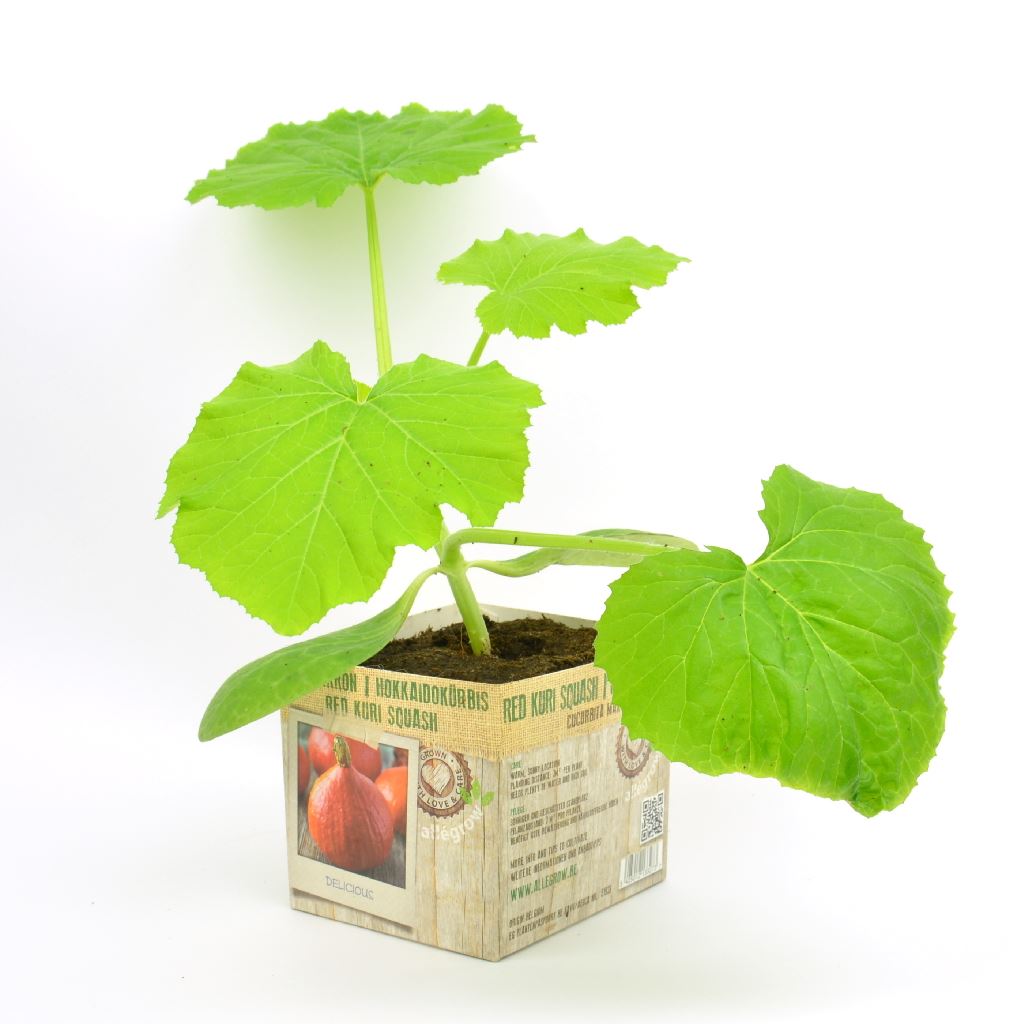Small red pumpkin, potimaron, hokkaido pumpkin - pressing block 10x10 cm
Potimaron - Kleine rode pompoen
Product information "Small red pumpkin, potimaron, hokkaido pumpkin - pressing block 10x10 cm"
The potimarron is a type of pumpkin, slightly smaller and darker in skin. In dishes, the flavor of a potimarron comes out even better, slightly finer and softer in flavor than the average regular pumpkin. Pumpkins were already cultivated in Central and South America between 9000 and 7000 years before Christ, and it was not until the 16th century that the pumpkin was first introduced to Europe. Pumpkins are used in a number of traditional dishes such as pumpkin pie, pumpkin bread and pumpkin soup. The oilseeds of the pumpkin can also be roasted and are delicious as an appetizer or to bake into a multigrain bread.
CULTIVATION TIPS:
The pumpkin is a plant that is very sensitive to night frost, so definitely do not plant out too early. Normally you can plant outside from mid-May without risk. Also keep in mind that the plant needs a lot of space. The pumpkin grows best in a sunny environment because it does like heat. For these reasons, planting in a compost heap is not a bad idea, the heat released by the compost is a benefit for the pumpkin (this also applies to patisson, of course). For best results, top the plant as soon as it reaches about 5 feet tall to allow it to form side shoots. Keep 2 to 3 side shoots. When the plant has set a number of fruits, it is better to remove the ever-emerging side shoots so that all the plant's energy can go to the fruits. Pumpkins need a lot of water, so try to keep the soil moist but not too wet. On very hot days it is advisable to water twice a day, because the large leaves evaporate a lot.
HARVEST AND STORAGE:
Pumpkins really can't stand night frost, so keep an eye on the weather forecast and be sure to harvest before the first fall night frost. Light frost can be fatal. Pumpkins should be harvested at an early stage. If the fruits are too large, they will lose their flavor. The ideal time to harvest pumpkins is late August, early September. A pumpkin is ripe when longitudinal stripes appear on the fruit stem, these stripes appear to be slightly corked. If you are going to harvest the pumpkin, always leave a stem of about four inches on the pumpkin, this is good for the shelf life. Harvest pumpkins carefully to prevent damage and, in all likelihood, rotting at a later stage. Store pumpkins in a dry, not too cold place. This way you can keep them for up to four months.
PROBLEMS AND DISEASES:
The main disease in pumpkins is powdery mildew. This disease can be recognized by the white spots on the leaves. Mildew usually occurs later in the season. The leaves will die but you will suffer virtually no loss of production.
Product specifications
| Application / use plant: | Unknown - n/a |
|---|---|
| Bloom Month: | July, August |
| Bloom color: | Yellow |
| Branches / bark: | Unknown - n/a |
| Dutch plant name: | Hokkaidopompoen |
| Flower color - details: | Yellow |
| Frost hardiness - details: | Very bad (-1 till +4°c), usda zone 10 |
| Frost resistance: | Not winter hardy |
| Fruit: | Orange |
| Fruit - details: | Orange, 11-15 cm diameter, 05-2 kg |
| Full grown plant height: | 50 cm |
| Growth habit : | Unknown - n/a |
| Growth habit - details: | Wide-spreading |
| Humidity/Soil: | Normal soil |
| Latin plant family: | Cucurbitaceae |
| Leaf / Foliage: | Unknown - n/a |
| Leaf / foliage - details: | Deciduous, green |
| Location: | Halfshadow, Full sun |
| Location - details: | Preferably full sun |
| Minimum growing height (in cm): | 50 |
| Plant characteristic: | Edible (fruit, leaf, flower), Fruit-bearing, Fruit vegetables |
| Plant family: | Cucumber family |
| Synonym / Trade name: | Cucurbita maxima 'Baby Red Hubbard', Cucurbita maxima 'Orange Hokkaido', Cucurbita maxima 'Red Kuri' |
| Taste: | Tasty fine flesh, can be eaten with the skin and all |
| Winter foliage: | Losing leaf |
| maximal growth height (in cm): | 50 |
| type of crop: | Vegetables |
| type of soil: | Calcareous soil, Clay soil (calcareous), Normal soil |
| type of soil / ground - details: | Any good garden soil |
Pictures of this plant
Reviews
Login


















